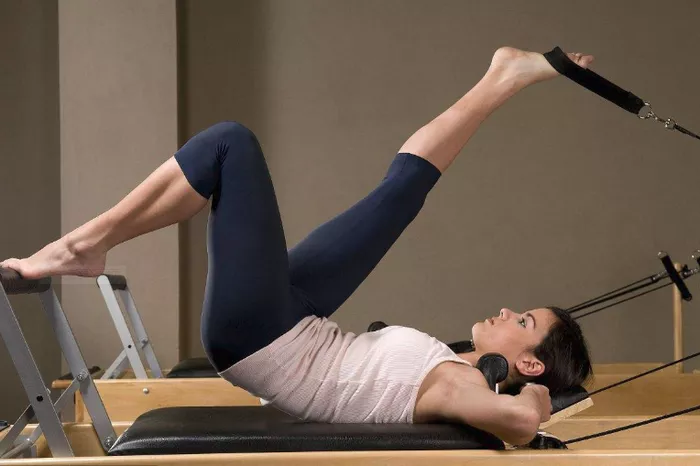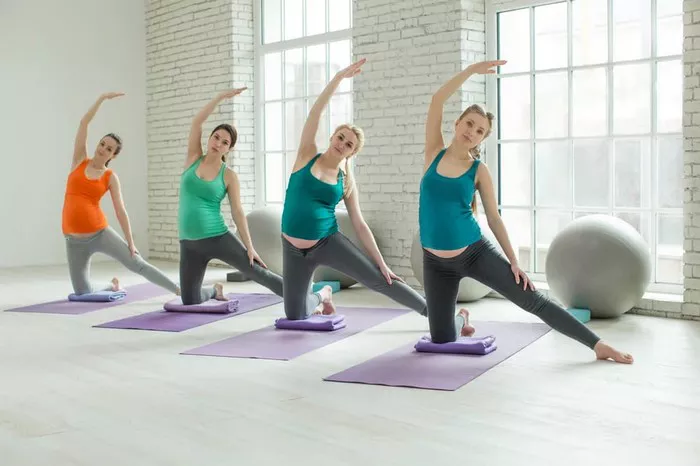Yoga is a profound practice that has been cultivated and refined for thousands of years. With its roots deeply embedded in ancient Indian philosophy and spirituality, yoga serves not only as a physical discipline but as a holistic system for mental, emotional, and spiritual well-being. There are countless styles and forms of yoga, each offering unique benefits and tools for personal growth. One of the lesser-known but highly impactful yoga practices is Kayakalpa Yoga.
In this article, we will explore what Kayakalpa Yoga is, its origins, and, most importantly, the wide array of benefits it offers. Whether you are a seasoned practitioner or a beginner in the world of yoga, this guide will shed light on how Kayakalpa Yoga can contribute to your overall health and well-being.
What is Kayakalpa Yoga?
Kayakalpa Yoga is an ancient form of yoga that originated in India, particularly within the Tamil spiritual traditions. The word “Kayakalpa” is derived from two Sanskrit words: “Kaya,” meaning body, and “Kalpa,” meaning transformation or rejuvenation. Thus, Kayakalpa Yoga can be understood as a practice of body rejuvenation or transforming the body to achieve longevity, vitality, and spiritual growth.
Kayakalpa Yoga aims to improve the health of the body and mind while slowing down the aging process. Unlike other yoga styles that focus predominantly on physical postures or meditation, Kayakalpa integrates a blend of specific techniques to purify and revitalize the body’s cells and organs, harnessing the body’s internal energy (prana) for healing and balance.
Traditionally, this yoga practice was passed down through esoteric spiritual lineages, with teachings that were kept secret. The practitioners of Kayakalpa Yoga were often yogis and sages who sought to extend their lifespan and attain higher states of consciousness. However, in recent times, Kayakalpa Yoga has become more accessible to the general public, providing individuals with the tools to rejuvenate both their bodies and minds.
The Core Principles of Kayakalpa Yoga
Kayakalpa Yoga is based on several foundational principles that support its goal of rejuvenation. These principles can be broken down into the following key areas:
Breath Control (Pranayama): Breath is a critical element in Kayakalpa Yoga, and pranayama exercises form a core aspect of the practice. These breath control techniques help regulate the flow of prana (life energy) throughout the body, enhancing vitality, calming the mind, and fostering overall physical well-being.
Purification Techniques (Kriyas): The practice emphasizes the importance of purification of the body and mind. Specific kriyas or cleansing techniques are used to detoxify the body, remove toxins, and facilitate the smooth flow of energy within the body.
Meditation and Mindfulness: Mental clarity and emotional balance are cultivated through meditation practices that allow practitioners to transcend their mental and emotional attachments. This aspect of the practice helps to achieve a sense of inner peace, which contributes to both physical and mental rejuvenation.
Postures (Asanas): While not as physically intense as other forms of yoga, Kayakalpa does include gentle yoga postures that promote flexibility and circulation. These postures facilitate the release of physical tension and encourage the free flow of prana within the body.
Diet and Lifestyle: Kayakalpa also emphasizes maintaining a balanced diet and healthy lifestyle to support the body’s rejuvenation. The practice encourages living in harmony with nature, consuming foods that nourish the body, and adopting healthy habits that preserve the body’s natural vitality.
The Health Benefits of Kayakalpa Yoga
Kayakalpa Yoga offers a range of profound physical, mental, and spiritual benefits. Below, we will delve into the specific advantages of this unique form of yoga.
1. Slows the Aging Process
One of the most notable benefits of Kayakalpa Yoga is its potential to slow down the aging process. Through its focus on detoxification, cell regeneration, and vitality, Kayakalpa can help prevent premature aging. The practice is believed to enhance the body’s ability to produce human growth hormone (HGH), which plays a significant role in maintaining youthful skin, muscle mass, and energy levels.
By practicing Kayakalpa Yoga, individuals often report feeling younger, more energetic, and rejuvenated, both in body and mind. This rejuvenating effect can result in a more vibrant appearance and greater vitality, which can contribute to a longer, healthier life.
2. Boosts Energy and Vitality
Kayakalpa Yoga works with the concept of prana (life energy), which flows through the body and sustains life. By practicing specific breathwork and purification techniques, the practitioner is able to harness and increase the flow of prana throughout the body. This enhanced flow of energy leads to a marked increase in vitality, helping individuals feel more energetic and alert throughout the day.
The practices in Kayakalpa Yoga aim to revitalize the body’s organs and systems, improving their functioning and promoting overall well-being. The effect is similar to that of a rejuvenating therapy, helping to restore energy reserves that may have been depleted by stress, illness, or poor lifestyle choices.
3. Detoxifies the Body
Detoxification is an essential aspect of Kayakalpa Yoga. By engaging in kriyas (cleansing techniques), practitioners can help flush out accumulated toxins from the body. This purification process supports the health of the digestive system, skin, and organs, and can lead to improved digestion, clearer skin, and better overall health.
The detoxification process is particularly beneficial for individuals suffering from the effects of poor diet, environmental toxins, or stress. By regularly practicing Kayakalpa, individuals can maintain a clean and balanced internal environment, which in turn supports long-term health and vitality.
4. Enhances Mental Clarity and Focus
The meditation and mindfulness practices central to Kayakalpa Yoga can significantly enhance mental clarity and focus. As practitioners delve deeper into their meditation practice, they are encouraged to let go of mental clutter, emotional stress, and negative thought patterns. This process helps individuals experience a heightened sense of inner peace, which directly translates into improved mental function.
Studies have shown that regular meditation helps to increase cognitive function and brain plasticity, which can enhance creativity, problem-solving, and concentration. For those who experience mental fog, stress, or difficulty concentrating, Kayakalpa Yoga provides an effective remedy for improving mental clarity and focus.
5. Balances the Nervous System
Kayakalpa Yoga works on the autonomic nervous system, helping to regulate the body’s response to stress. Through the practice of pranayama and meditation, individuals can activate the parasympathetic nervous system, which is responsible for the body’s relaxation response. This leads to a reduction in overall stress levels and a greater sense of emotional equilibrium.
Over time, consistent practice of Kayakalpa can help regulate blood pressure, heart rate, and other vital functions, promoting long-term health and emotional well-being. By maintaining a calm and balanced nervous system, practitioners are better equipped to manage the challenges and stresses of daily life.
6. Promotes Emotional Well-Being
Kayakalpa Yoga encourages emotional purification through its spiritual and meditative practices. Emotional healing is facilitated through regular meditation, which helps practitioners process and release negative emotions such as fear, anger, and anxiety. By cultivating a sense of inner peace and emotional balance, individuals can experience greater emotional stability and resilience.
The practice also emphasizes self-love and self-awareness, promoting a deep sense of connection to one’s inner self. This spiritual nourishment is crucial for emotional health and can help to foster a positive outlook on life.
7. Improves Flexibility and Strength
While Kayakalpa Yoga is not as physically demanding as some other styles of yoga, it still incorporates gentle asanas (postures) that encourage flexibility and strength. These postures help release tension in the muscles and joints, improve circulation, and enhance overall flexibility.
Regular practice of Kayakalpa can lead to improved posture, greater joint mobility, and increased muscle tone, all of which contribute to better overall physical health and reduce the risk of injury.
8. Enhances Spiritual Growth
Kayakalpa Yoga is not just a physical practice but a spiritual journey. It is designed to help practitioners connect with their higher selves and access deeper states of consciousness. Through meditation, purification, and mindful living, individuals can experience a profound sense of spiritual awakening and alignment with their true purpose.
As a form of spiritual healing, Kayakalpa can support practitioners in their quest for enlightenment, self-realization, and connection to the divine. It provides the tools for individuals to transcend the limitations of the ego and experience the bliss of oneness with the universe.
Conclusion
In summary, Kayakalpa Yoga offers an exceptional range of benefits for those seeking to rejuvenate their body, mind, and spirit. By focusing on breathwork, purification, meditation, and gentle postures, Kayakalpa enhances physical vitality, mental clarity, and emotional balance. It is a holistic practice that can slow the aging process, increase energy levels, improve health, and promote spiritual growth.
Whether you are looking to improve your overall health, reduce stress, or deepen your spiritual practice, Kayakalpa Yoga provides the tools to achieve these goals. With regular practice, you can experience the transformative effects of this ancient discipline, leading to a more vibrant, peaceful, and fulfilled life.
Related Topics:














